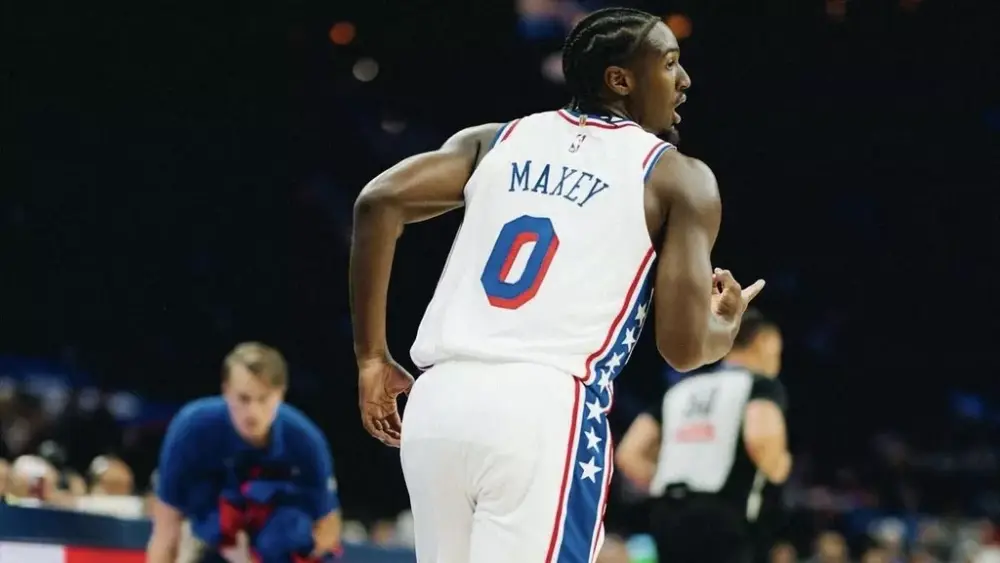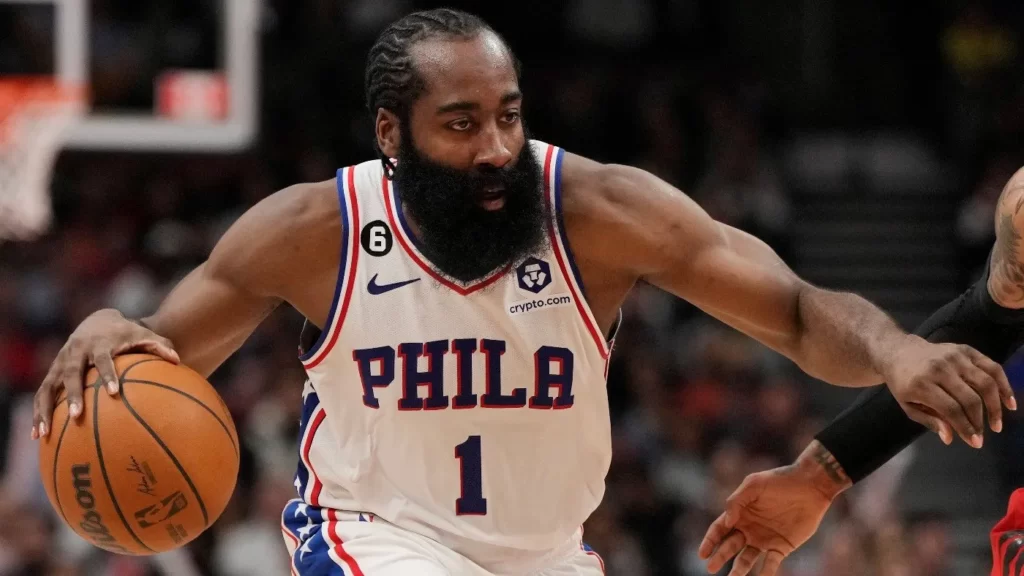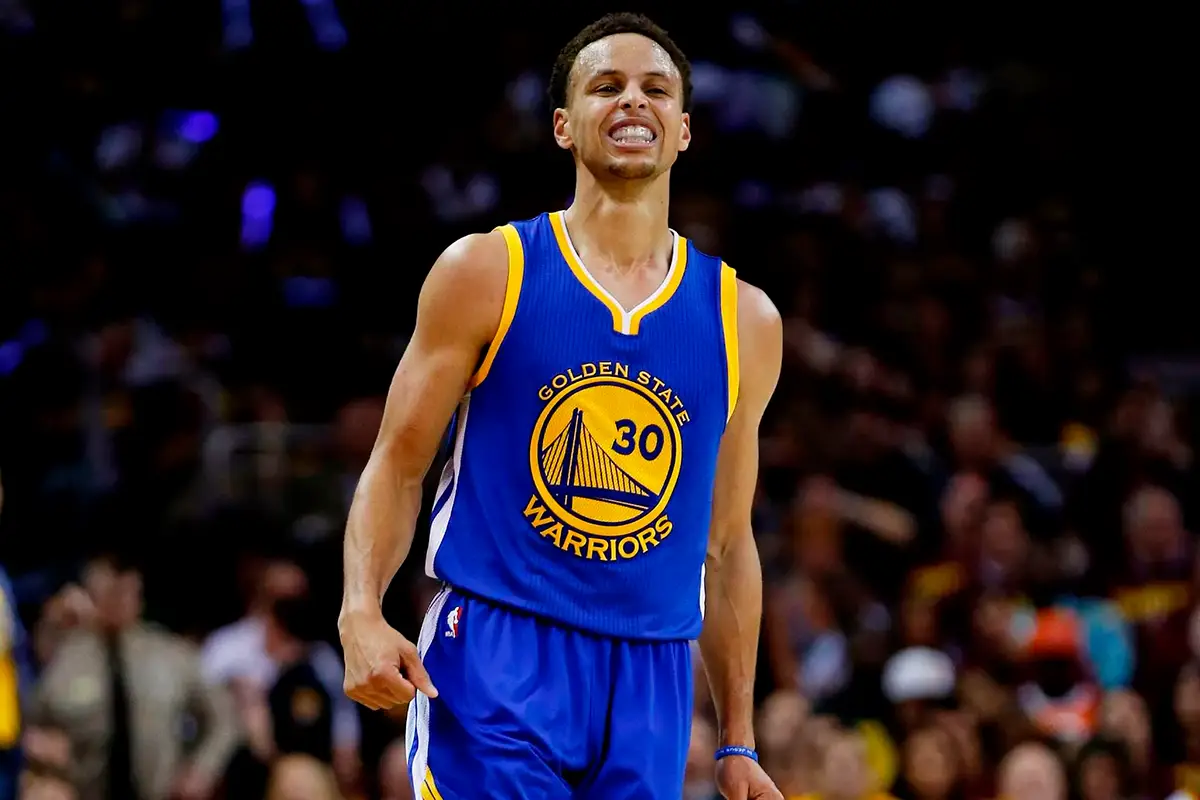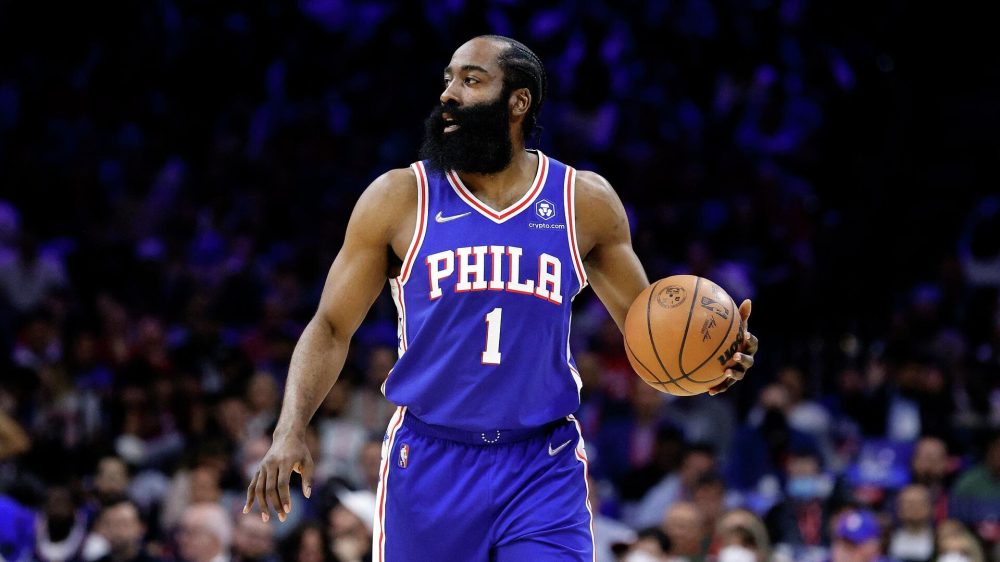The Philadelphia Sevens Sixers are a team whose name commands the respect of basketball fans on every continent. The club has managed to go through ups and downs while maintaining its identity and fighting spirit. In 2024, the team is still one of the brightest representatives of the NBA, boasting spectacular games and outstanding results.
What is the secret of the Philadelphia Seventy Sixers’ success? A unique combination of strategic thinking, outstanding talent and an unwavering will to win has allowed the team to remain competitive for decades.

The history of the Philadelphia Seventy Sixers
The club’s rich history dates back to 1946, when the team was still known as the Syracuse Nationals. At that time, American basketball was rapidly gaining popularity and the Sixers quickly established themselves as a strong and ambitious team.
In 1963, the club moved to Philadelphia and was given its current name. The signing of Wilt Chamberlain, one of the greatest centre-backs of all time, marked the beginning of a new chapter in the club’s history. In the 1966-67 season, the team won the NBA championship with 68 victories, a record that remained unattainable for a long time.
The next wave of success came in the 1980s. The legendary players Julius Irving and Moses Malone led the team to its second NBA title in 1983. The duo became a symbol of those years and their style of play became a benchmark to follow. In the 1990s and early 2000s, the Philadelphia Seventy Sixers experienced another heyday thanks to the dazzling Allen Iverson, who became the face of the team and an icon of professional basketball.
Philadelphia Sevens Sixers Legends
Legends are the foundation of any team’s greatness, and the Philadelphia Sevens Sixers are a treasure trove in this regard. Their ranks include names that have become symbols of entire eras of professional basketball:
- Wilt Chamberlain, the record holder in points per game (100 points), dominated the three-point zone and changed the perception of a centre’s abilities.
- Julius Irving (Dr J) – A master of overhead shots and aerial acrobatics. His style of play inspired generations of young players.
- Allen Iverson is a symbol of defiance and individual excellence. His rapid dribbling and incredible throws have become legendary.
Each of these basketball players contributed to the development of professional basketball and helped the team win trophies. The legends of the Philadelphia Seventies Sixers remain a benchmark for modern players who dream of repeating their successes.
Philadelphia Sevens Sixers squad for 2024
 The 2024 season promises to be an important milestone for the club. The team has put together a strong and balanced squad that can compete for the championship. Under the leadership of experienced coach Nick Nurse, the Sixers want to reaffirm their ambitions in the NBA.
The 2024 season promises to be an important milestone for the club. The team has put together a strong and balanced squad that can compete for the championship. Under the leadership of experienced coach Nick Nurse, the Sixers want to reaffirm their ambitions in the NBA.
Key players:
- Joel Embiid – MVP of the 2022-2023 season, a dominant centre whose arsenal consists of powerful throws and solid defence.
- Tyreese Maxey – A young and dynamic defenceman known for his speed and shooting accuracy
- Tobias Harris is a versatile forward who can play both offence and defence.
These players are the backbone of the team and their interaction on the pitch is the key to success. Each of them makes a unique contribution to the tactics of the game: from strong defence to lightning-quick counter-attacks.
The coaching staff focuses on a balance between veterans and young talent, implementing modern strategies and adapting to the demands of modern basketball.
Philadelphia Seventy Sixers matchups for the 2024 NBA season
The games promise to be entertaining and exciting. The team goes into battle with ambitious opponents and faces the task of gaining a foothold in the upper part of the table.
The most important matches of the season:
- Against the Boston Celtics: an eternal confrontation, full of emotion and sporting fury. These games always attract the attention of millions of spectators.
- Against the Milwaukee Bucks: a duel with one of the strongest teams in the Eastern Conference. The outcome of these games could decide the fate of the playoffs.
- Against the Los Angeles Lakers: a historic duel between two basketball giants.
These games will be a test of the club’s character and willingness to fight for the championship title. Each game is an opportunity to see how the Philadelphia Sevens Sixers execute their strategy and prove their strength on the court.
Team statistics and achievements
The Philadelphia Sevens Sixers are a team whose performances and statistics reflect decades of hard work, successes and highlights. In its long history, the club has won three NBA titles: 1955, 1967 and 1983. Each of these victories was the result of a perfect blend of tactics, skill and leadership from its star players.
Significant statistics:
- 1955: first championship win as Syracuse Nationals.
- 1967: second championship title. The team finished the season with a record of 68 wins and only 13 losses. Wilt Chamberlain was a key figure in this triumph.
- 1983: Third title. Julius Irving and Moses Malone led the team to victory and finished the playoffs with a record of 12-1.
Throughout their history, the Philadelphia Seventy Sixers have consistently achieved outstanding results and have occupied a top position in the Eastern Conference. The team regularly makes the playoffs and their games are real spectacles for the fans.
The new season also comes with great expectations. The balanced composition of the 2024 team and the high level of preparation of the athletes give hope for a successful performance and the fight for the championship.
American basketball and the role of the Philadelphia Seventy Sixers
The Philadelphia Seventy Sixers have played an important role in the development of American basketball. The team was at the forefront of creating modern standards for the game and was instrumental in popularising the NBA as a worldwide phenomenon.
The Sixers have always been known for their ability to adapt to changes in basketball culture. In the 1960s, the team set the pace of the game thanks to the dominance of Wilt Chamberlain. In the 1980s, Julius Irving introduced elements of showmanship and artistry to basketball that later became the standard for all players. In the 2000s, Allen Iverson symbolised an era of individual skill and relentless character.
Today, the Philadelphia Seventy Sixers remain at the forefront of innovation. The coaching staff employs modern analytical approaches to optimise the game, and the team’s young talent is eager to etch their name in American basketball history.
Conclusion
 The Philadelphia Seventy Sixers are a symbol of basketball history and culture. Every era, every player and every game adds new pages to the club’s annals. From their first championship titles in the 1950s to their ambitious plans for 2024, the Sixers continue to amaze, inspire and capture the hearts of their fans.
The Philadelphia Seventy Sixers are a symbol of basketball history and culture. Every era, every player and every game adds new pages to the club’s annals. From their first championship titles in the 1950s to their ambitious plans for 2024, the Sixers continue to amaze, inspire and capture the hearts of their fans.

New challenges, new victories and perhaps new legends lie ahead. The Philadelphia Seventy Sixers maintain their unique style and spirit as they prepare to rise to the top of the NBA once again. Those who follow their games will witness history being made in the here and now.
 en
en  de
de  ar
ar  es
es  hi
hi  fr
fr  nl
nl  it
it  pt
pt  el
el 









